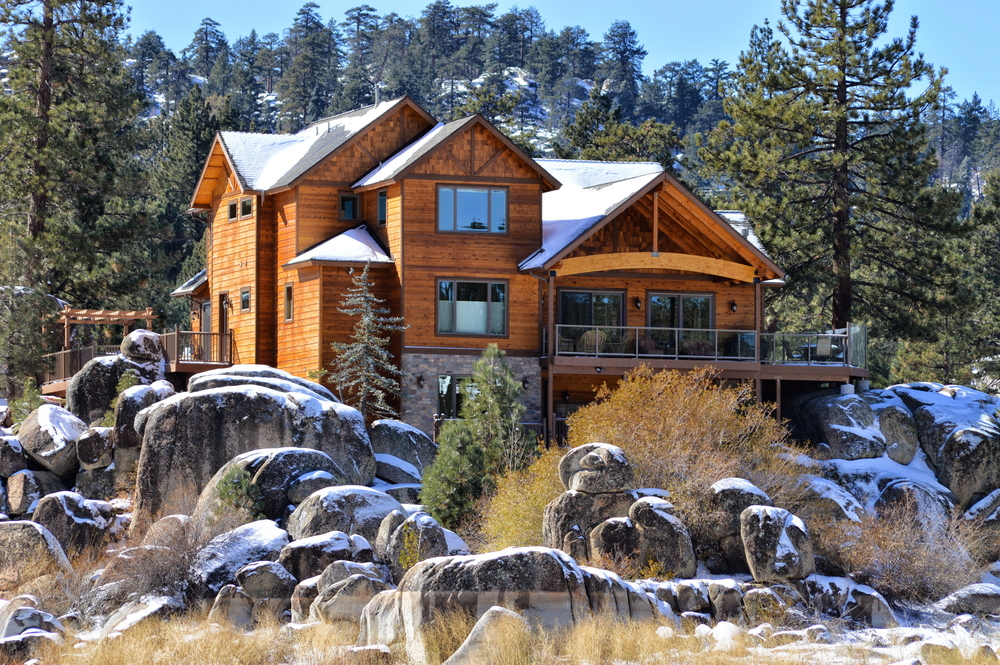Building Homes In Alpine Climates: What Considerations Need To Be Made?
The two most complicated natural environments for building residential properties tend to be either coastal or alpine environments. Both of these are accompanied by unique biomes and weather patterns, with some key issues across both landscapes being erosion and wind exposure.
But building a home in an alpine region naturally comes with a few more high-risk factors to budget for. For starters, alpine homes are at an elevated risk of experiencing damage caused by fallen trees. Similarly, the higher altitude paired with isolated surroundings can make it tricky for alpine homeowners to stay connected to the wider community in the event of an emergency.
Thankfully, alpine homeowners have a few options when it comes to protecting themselves and their property. Alongside taking out tailored building insurance, alpine homeowners also have the option to ensure that their properties are equipped for all the unique dangers that accompany living high up in the mountains and alpine forested areas.
Here are just some of the key considerations that must be made when building any kind of residence in an alpine environment today.
Site specifications
When building a residential property anywhere in the world, it’s important to first develop an awareness of the properties and specifications of your intended construction site. This should always begin with a soil examination. Is there any evidence of contaminants in your site’s soil? Are there signs of erosion that may impede your construction plans? Is your soil compacted or is it well-draining? Answering these questions now can help greatly simplify the process of laying your home’s foundation.
Your site examination should also include assessing other concerns like tree coverage, wind exposure, and solar exposure. Are there trees planted along your property’s fence line currently, or will you need to do this yourself? And on the topic of neighbouring trees, this is also a great time to consider clearing any taller trees that may be at risk of falling onto your home later down the road.
Alpine landscaping
If there are any towering trees that need to be trimmed or removed, consider doing so prior to commencing with construction. Similarly, planting trees around your property may also help improve the quality of your soil. In short, doing a little bit of alpine landscaping before you break ground can help simplify your home construction project.
Alongside thinking about preliminary landscaping tasks, it’s also a good idea to consider how you’d like to arrange your home’s garden spaces once you’re ready to move in. Do you want to grow your own veggies or herbs? If so, installing some raised garden beds or even adding some greenhouse facilities can help you make the most of your alpine garden.
Heat insulation
Heat retention is naturally going to be a paramount concern for alpine properties. Thankfully, with passive heating and design methodologies at your disposal, it should be easy enough to keep your alpine home naturally comfortable from season to season.
Alongside installing double-pane windows and using sturdy sealants for controlling air flow, alpine homeowners should also invest in effective wall, floor, and ceiling insulation for their homes. Pairing insulation materials with a suitable home heating system is also ideal. For alpine properties, the best internal home heating systems are typically going to be ducted rather than split systems.
Build materials and cladding
Keeping the wind out is just as important as keeping the cold out – especially if you’re living on a mountain slope. If you’re concerned about your property being exposed to harsh wind, frost, and wet weather conditions, it’s essential that you think critically about the building and cladding materials you’d like to use when constructing your home.
Pressure-treated timber, cement, and metal are considered to be amongst the best building materials for alpine homes. Stones and bricks are also ideal as they’ve been known to be good insulators and are thus, a great energy-saving building material for alpine residences.
As for cladding, concrete, timber, and brick are all good options again. And once again, planting trees along your property’s perimeter can also help reduce your overall wind exposure.
Roof design
As alpine properties are more likely to experience hail or snowfall, it’s essential that you invest in secure and aptly designed roofing for your home. Alpine properties are typically characterised by their steep sloping roofs, namely to ensure that excess snowfall doesn’t accrue on your rooftop and result in water damage to your roof shingles or ceiling, or even in the formation of ice dams.
If you live in an area that receives higher than average snowfall, it’s also advised that you invest in snow retention systems. These can be installed on your property’s roofing to reduce risks of excess snow accumulation falling on unsuspecting members of your household. With snow retention systems installed on your roof or incorporated into your roof design, you can make sure that your alpine property is safe to inhabit all year round.
Energy and plumbing connections
Finally, alpine homeowners are also advised to invest in frostproof plumbing and electrical wiring for their properties. This is vital to ensuring that your energy and plumbing systems stay robust from season to season.
Correct installation of energy and plumbing fixtures accompanied by routine maintenance of these systems can help keep your alpine property comfortable and keep your own home repair costs to a minimum every year.
~
With all these considerations made, alpine properties can be maintained and cared for with minimal costs and time requirements. Setting up your alpine property so it’s equipped with all the right materials, fixtures, and design features to suit your unique climate is quintessential for keeping comfortable and securing your property investment in these typically harsh and challenging site environments.
































